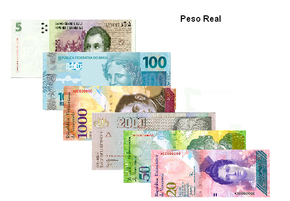Even though it is part of the 1983: Doomsday Timeline, its creator or creators have more work to do before it can be complete. You are welcome to give suggestions at the Talk Page. |
The South American Confederation is an organization of independent nations in South America created to stop the supposed successor of the "traditional Anglo-American Imperialism".
History
Pre-Doomsday look-back
In the eyes of many Europeans and Americans, most of the nations on the South American continent were failures. Many were dictatorships, others were puppet states, others were just corrupt and poor. There were a few like Argentina which had started their first free elections in 1983, or French Guyana which was administered by France and a de facto member of the European Economic Community. Even as a whole South America was not doing good, Venezuela was on the start of the worst economic crisis it had in his history, Colombia was fighting the FARC, Chile was under a dictatorship and was out of a financial crisis, so was ready to recover his economy, Peru was facing tough economic times and increased insurgencies, Paraguay was in the middle of the world's longest military rule by Alfredo Stroessner, Argentina was recently defeated by Great Britain in the Falklands War, while Brazil was in the middle of a military government.
However, on September 26, 1983, the entire world changes. Within days, South America, once a third-world cesspool had turned into a haven for refugees from all over.
The Immediate Aftermath
South America, Antarctica, and Africa were the only continents revealed to not have been hit with nuclear weapons. Refugees began arriving from Europe, North America, and Panama.
Constitution
In 2004, the Confederation of South America was officially formed as a supranational organization, its first President being Nestor Kirchner from the UAR. All South American borders were lifted in 2008. The Confederation has a single currency (Peso Real, PR$), but each member country will has own government and laws. All National armed forces were merged on a single South American army by 2006, with its commander-in-chief being the Confederation President, in order to keep the organization united. Presidency of the Confederation will have two year terms, with country rotation. It also created a Confederate Constitutional Assembly, composed of legislators from all of the member countries, which created a new Confederate Constitution which is viable to all countries of the organization. The new Confederate Constitution acts as a guideline for local Constitutions, with all of local laws contrary to the Confederate Constitution being revoked when the new Constitution is published. The new Constitution was promulgated in early 2010. Some of the articles of the new supranational Constitution are:

Most members of the SAC have the Peso Real as their only and sole currency while others, like Venezuela and Peru, continue using their old currency.
- Total banning of nuclear weapons in member countries, except for research purposes leading to other forms of energy such as fusion power (approved on June 2nd, 2004).
- Total banning of broadcasting/press censorship on all of the member countries. Age restrictions to improper content on only specific hours of the day still apply (approved on July 1st, 2004). Right of response is assured, as long as it is obtained through legal means.
- Creation of a Confederate Supreme Court, composed by members from all member countries. This Court will address matters related to the Confederate Constitution (including discussion about acts from members Constitutions that contradict the Confederate Constitution), as well as legal disputes between member countries (approved on November 6th, 2004).
- Creation of a Confederate Military Court, with the goal of settling legal disputes regarding military personnel actions and military crimes (also approved on November 6th, 2004). This rendered local military courts, such as the Brazilian Superior Military Court (Superior Tribunal Militar) obsolete.
- Creation of a unified currency, the Peso Real (PR$), with a time frame of 4 years after the promulgation of the Constitution to be implemented on all Confederate countries. (Approved on February 12th, 2005).
- Creation of a Confederate Federal Police Force, which will be responsible for dealing with crimes such as drug trafficking (approved on May 5th, 2005).
- Requirement that all countries seeking membership on the Confederacy be democratic republics, with universal suffrage, and terms no longer than eight years (divided into two four year terms) for the heads of state (approved on July 4th, 2005).
- One of the prime tasks of the Confederate Army will be the defense of the Amazon rain forest and its water supplies, in order to prevent future pillage of its water and other natural resources by other countries, due to shortages in North America and Eurasia (approved on November 2nd, 2005).
- Establishment of the Confederacy headquarters in Montevideo, Uruguay (approved on February 3rd, 2006, after intense argument).
Members
 República Unida de America del Sur (includes the Falkland Islands)
República Unida de America del Sur (includes the Falkland Islands)Bolivia
- File:Flag of Brazil 1968-1992.png Brazil
Chile
Colombia
Ecuador
Paraguay
 Peru
PeruVenezuela
Observers
International Territories
International Relations
The South American Confederation is represented across the post-Doomsday world. Along with Australia and New Zealand, they have helped rebuild much of Africa, Asia, Europe, and North America.
See also
| ||||||||||||||
| ||||||||||||||||||||||



